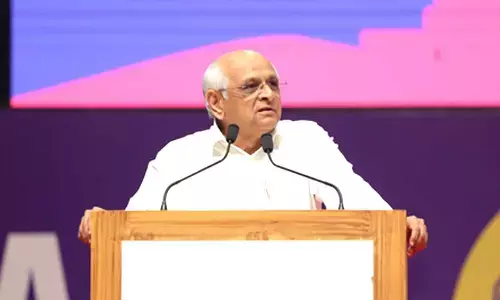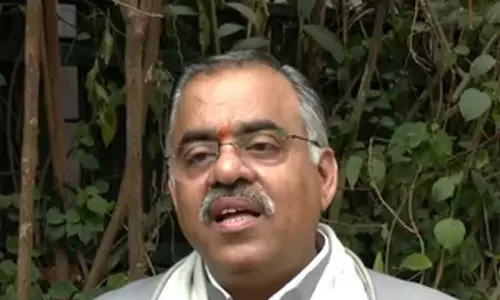Career opportunities in chip designing

A $10 billion incentive program was approved by the Govt in 2021 to lure semiconductor and display makers as a part of its growing effort to turn India into a powerhouse for the production of electronics worldwide.
A $10 billion incentive program was approved by the Govt in 2021 to lure semiconductor and display makers as a part of its growing effort to turn India into a powerhouse for the production of electronics worldwide. It is expected that substantial employment prospects will result from this decision, which will also boost the economy's export sector. According to the Minister of Science and Technology, the "Chips to Startups" programme will prepare 85,000 engineers who will aid in the realization of the goal of becoming a global leader in semiconductors.
IC design and verification as a career
Be it our smartphones, laptops, microwaves, and TVs to health trackers, refrigerators, thermoelectric apps, and cars, chip designers have their brains behind them!
An aspirant develops skills and abilities over the course of many years through hands-on experience. You can refer to the following list to add in your bucket of skills if you are planning to be a successful chip designer:
1. Identifying and developing the specification of the system
2. Deciding on the building blocks and their hierarchy level in the system
3. Designing the basic logic for the system
4. Verifying the functionality of the system
5. Translating the system into a physical layout
6. Verifying the physical design
7. Fabricating the physical design
8. Final testing of the chip
The core of the chip design sector includes VLSI (Very-Large-Scale Integration), embedded software development, and hardware/board design. Front-end designing and back-end designing are the two subfields of chip design. You need to have a firm grasp of analog and digital electronics if you want to work as a chip designer. The knowledge of their fundamentals is a must for you to be able to start thinking and working like a micro architect.
India can be the next semiconductor hub!
The global market for semiconductor chips is anticipated to exceed US$600 billion, according to Deloitte's 2022 semiconductor industry outlook. The research also predicts that supply chain problems and the shortage of chips might last until 2023.
Organizations all over the world have a responsibility to maintain the semiconductor supply chain, as chips are essential components in the majority of modern gadgets, equipment, and cars. The demand for semiconductors is rising on a global scale, and India can contribute to this demand.
Up to 20 per cent of the world's chip design engineers are based in India, which has an extraordinary skill pool for semiconductor design, as stated by our hon'ble PM Narendra Modi at the Semicon India Conference 2022. By 2026, the prime minister anticipates that the country's semiconductor usage will surpass $80 billion.
India is testing ways to expand its domestic chip manufacturing and semiconductor industry. "We have put the [odds] in your favour as far as possible through a supportive policy environment. We have shown that India means business. We are on our way to connect 6,00,000 villages with broadband. We are investing in developing capacity in 5G, IoT and clean energy technologies. We are working to unleash the next wave of innovation in data, AI and other technologies," the PM said addressing the country's chip sector builders.
Career opportunities in chip designing
The Ministry of Electronics and Information Technology (MeitY), GoI launched the 'Chips to Startup' programme in December 2021 in an effort to make India a semiconductor powerhouse. With this initiative, MeitY aims at producing 175 ASICs (Application Specific Integrated Circuits), functioning prototypes of 20 System-on-Chips (SoC), and an IP Core repository over the course of five years by training 85,000 engineers in VLSI and ESD (Embedded System Design).
In the words of Vivek Tyagi, Chairperson at IESA (India Electronics and Semiconductor Association):
More and more that we design, more intellectual properties we have, more patents we have, and more high-value jobs we can create, rather than just assembly worker jobs. As rightly said, right now, there are no test facilities for chips in India which is why chip testing takes longer than expected. If any issue is spotted during testing, the designers have to fly to the test facilities to fix the bugs. So the cycle is approximately 3-6 months. Developing test facilities here in India will add value to the Indian semiconductor industry.
India is surely making a huge stride in accelerating the manufacture of semiconductors and display fabrication units with the latest Rs 76,000 crore incentive package. The government's "Make In India" program is well-thought-out and a start in the right direction, with objectives to create 100 million manufacturing jobs by the end of 2022, increase the sector's contribution to GDP to 25% by 2025, and guarantee an annual growth rate of 12–14%. Today, India's ultimate goal is unquestionably to dominate the global semiconductor supply chain.
Job profiles
Field Application Engineer, FPGA Back-end Verification Engineer, Front-end Verification Engineer, IP Design Engineer Verification Engineers
Dr. Shruti Vashist
Dean Engineering College
Manav Rachna University
















